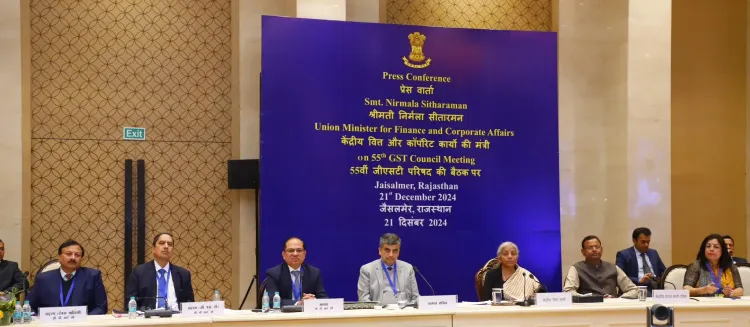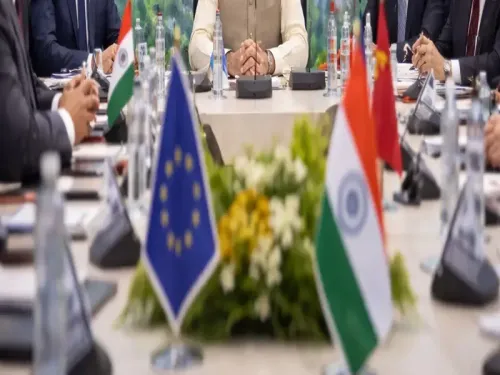Is it true that every 1 in 5 GST taxpayers in India is now a woman?

Synopsis
Key Takeaways
- One in five GST taxpayers in India is a woman.
- 14% of registered taxpayers are all-female businesses.
- GST has doubled in gross collections over the last five years.
- States with higher GSDP often have lower GST taxpayer representation.
- GST has simplified the tax structure, promoting transparency.
New Delhi, July 22 (NationPress) Recent research from SBI indicates that there are over 1.52 crore active Goods and Services Tax (GST) registrations in India. Notably, one in five of these registered GST taxpayers now includes at least one woman, while 14 percent of the total registered taxpayers consist solely of female members based on their business structure.
This representation is particularly pronounced in limited liability partnerships (LLPs) and private limited companies, showcasing a significant advancement in corporate representation, as highlighted in the SBI’s Economic Research Department report.
According to Dr. Soumya Kanti Ghosh, Group Chief Economic Advisor at SBI, “This data, coupled with a 15 percent representation of women among all income taxpayers and 40 percent in total deposits, reflects progress in women empowerment.”
Over the past five years (FY21-FY25), gross GST collections have doubled, with the average monthly gross GST collection now reaching ₹2 lakh crore. The top five states contribute 41 percent of the gross revenue, and six states have surpassed the ₹1 lakh crore threshold, Dr. Ghosh added.
States with GST collections exceeding ₹1 lakh crore have an Integrated Goods and Services Tax (IGST) share greater than 30 percent in their overall domestic collections, underscoring the role of larger states in enhancing GST revenue across the nation.
As of July 1, the GST has been in effect for eight years since its introduction in 2017, a transformative step toward economic integration. GST simplified the tax landscape, replacing a complex array of indirect taxes with a streamlined system that facilitates tax compliance, reduces business costs, and enables the seamless movement of goods across state lines. By fostering transparency and efficiency, GST has contributed to the establishment of a more robust, integrated economy.
Dr. Ghosh stated, “Our findings suggest that the convergence pattern strengthens over time, reaching its peak in FY25 across all quantiles. By FY25, a strong convergence is evident across the board, indicating a wide-reaching equalizing effect of GST.”
Interestingly, some affluent states such as Telangana, Tamil Nadu, Kerala, Andhra Pradesh, and Karnataka have a lower proportion of active GST taxpayers compared to their Gross State Domestic Product (GSDP). Conversely, states like Uttar Pradesh, Bihar, and Gujarat have a higher share of total GST taxpayers than their GSDP would suggest, indicating untapped potential in GST in these areas.










